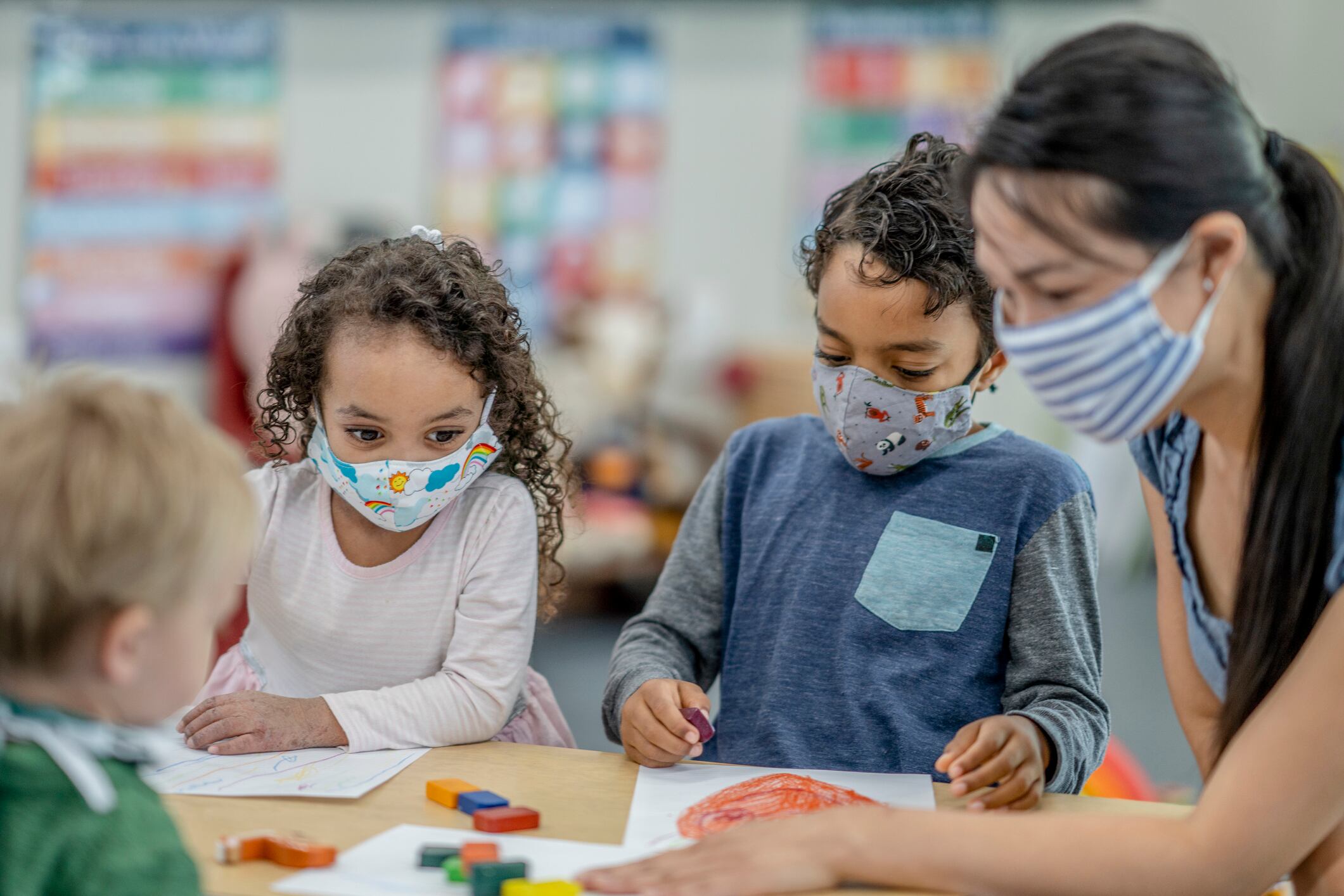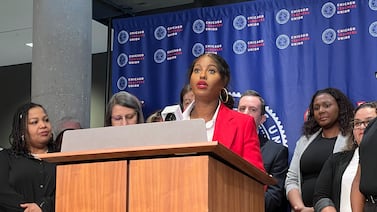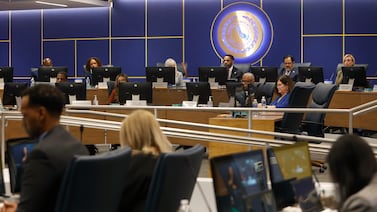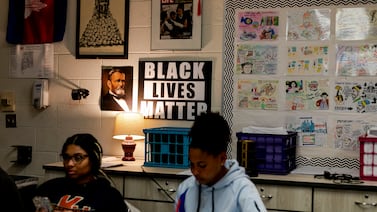Gov. Kathy Hochul is pledging a historic $7 billion in child care funding for New York families as part of this year’s state budget deal announced Thursday.
Lawmakers must still vote to approve the budget deal that Hochul said she’s reached with leaders of the state Assembly and Senate. If passed, the multi-billion-dollar investment would be spread over the next four years, paving the way for universal child care and helping to stabilize an industry shaken by COVID.
Hochul said the deal would double how much the state currently spends on subsidized child care and expand the number of eligible families.
It’s unclear how the state will roll out the ambitious expansion, which would dramatically increase which families qualify for reduced-cost care and steer more money toward providers.
“What we’re seeing in New York could propel us to the national forefront,” said Steven Morales, New York policy director for All Our Kin, a national nonprofit organization that supports child care providers who work out of their own homes.
Hochul did not share more specifics about the deal, and her office did not immediately respond to questions. Two sources familiar with budget negotiations said they are expecting subsidies for free care to include families earning up to 300% of the federal poverty limits by August, up from the current 200%. That means that a family of four earning around $83,000 would qualify for subsidized child care. Previously the limit was around $55,500 for a family of four. (The final deal did not make care free, keeping in place co-payments that advocates had hoped would be eliminated.)
Some advocates were disheartened by the deal. Alliance for Quality Education, which had pushed for a $5 billion investment next year alone, believes the plan falls short and will lead to a “slow roll out” that may force parents to remain on wait lists for years or “continue to be forced to pay high costs” for child care.
“The issue with all of this is that they are doing a lot more in terms of including more families with the 300% eligibility, but they’re not adding a lot more money, so it’s almost like this illusion that more families will get access to child care when they actually know the counties will run out of money quickly,” said Jasmine Gripper, executive director of Alliance for Quality Education.
In a significant loss for advocates, children who are undocumented will not be eligible for subsidized care, leaving out an estimated 5,000 children across the state who are excluded from more affordable programs because of immigration status, according to an estimate from Empire State Campaign for Child Care.
Children who are citizens but whose parents immigrated without papers could still qualify for care, but advocates worried that work requirements would be a barrier for those families, especially those who “work under the books and get paid in cash,” Gripper said. It is unclear what work requirements would look like for the program or if any changes are being considered.
For providers, sources said they expect the budget will include just over $340 million in stabilization grants to help cover the costs of operating through the pandemic. The sources also expect the state will change the way it calculates reimbursement rates and help centers stay financially viable over the longer term by paying providers more than they currently receive to care for young children.
Many of these investments have been on the wish lists of early childhood education advocates for years. Jessica Sager, All Our Kin CEO and co-founder, said the pandemic finally made the need for child care more obvious than ever as parents struggled to teach their children from home or had to leave the workforce altogether.
“We have been forced, as a society, to deal with the consequences of this broken system,” Sager said.
New York City has significantly expanded child care for 3- and 4-year-olds through free preschool programs in recent years, but families with infants have struggled to find and afford care.
In 2019, there were more than 200,000 infants living in New York City and more than 93,000 whose families qualified for subsidized care because of their income. Yet only about 8,000 were enrolled in publicly supported programs, according to public data analyzed by the Citizens’ Committee for Children, or CCC, a nonprofit advocacy group.
It costs almost $19,000 to enroll in center-based programs or more than $10,000 for programs that are run out of providers’ homes, putting care out of reach for many families. Many women who have left the workforce during the pandemic have not returned, with 35% of those reporting lack of child care as the reason, according to census data analyzed by CCC.
Providers, meanwhile, have struggled to make ends meet since well before the pandemic. Many operate as private businesses, while those that participate in public programs say the rates they’re paid do not come close to covering costs. COVID made things more difficult, with more expenses and plummeting enrollment. Many were forced to close their doors.
Jennifer March, executive director of CCC, said the proposals from the state Senate and Assembly, which called for investing at least $3 billion, had the potential for “real impact on the workforce, real impact on parents and their ability to work and access affordable care, and real impacts on children,” March said.
Gregory Brender, director of public policy for the Day Care Council, said his organization is still hoping to push lawmakers to make care eligible for more families even after the budget is finalized, including those with varying immigration statuses.
“Child care has been treated differently than public education, where it’s been based on income requirements and work requirements and other requirements,” Brender said. “We really need to move to a system where early childhood education is a right.”
Christina Veiga is a reporter covering New York City schools with a focus on school diversity and preschool. Contact Christina at cveiga@chalkbeat.org.
Reema Amin is a reporter covering New York City schools with a focus on state policy and English language learners. Contact Reema at ramin@chalkbeat.org.
Correction: This story previously stated the state budget deal would expand free childcare. In fact, the deal expands which families qualify for dramatically subsidized care, but co-payments will still be required.






